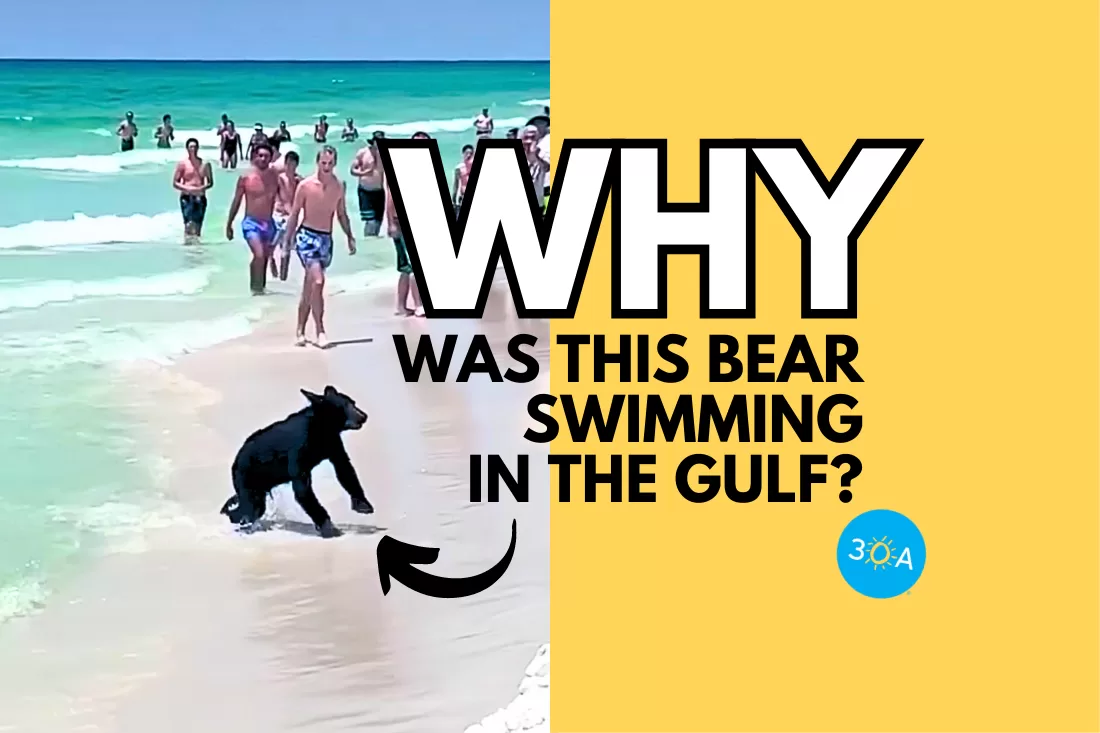Why is a Bear Swimming in the Gulf? A Bear Expert Explains
Bear-ly Believable: a surprising encounter in the Gulf!!! 🐻🌊
Bear-ly Believable: a surprising encounter in the Gulf!!! 🐻🌊

On Sunday, June 11, 2023, a black bear made quite a splash in the Gulf of Mexico, surprising the throng of beachgoers enjoying a swim at the beach in Destin, Florida. Locals and tourists alike were taken aback by the sight of a bear cub swimming in the Gulf—certainly something you don’t see every day.
The presence of the bear created quite a commotion as it made its way across the beach. Initially mistaken for a dog, the bear cub gracefully navigated the waves alongside unsuspecting beachgoers. It wasn’t until the bear reached the shore and quickly scampered away from the curious crowd that its true identity became clear.
Videos of the unusual encounter went viral, capturing the astonished reactions of people who had witnessed the unexpected beach escapade.
While it remains a mystery how the bear found its way into the Gulf waters, black bears are known to roam the diverse habitats of Florida.
Black bears in Northwest Florida belong to the subspecies known as the Florida Black Bear (Ursus americanus floridanus). This subspecies is unique to Florida as well as parts of Georgia, Alabama, and Mississippi. They’re typically found in wooded areas, and like all black bears, they are highly adaptable, making their homes in various habitats, from swamps to forests.
In Northwest Florida, a significant population of black bears resides in the Apalachicola National Forest, Eglin Air Force Base and in the Ocala National Forest. These locations are vast, undeveloped tracts of land that provide the type of habitat black bears require.
Florida black bears are omnivores and their diet consists of a wide variety of foods, including berries, nuts, insects, small mammals, fish, and plant material. Occasionally, they may also eat human-related foods like garbage, pet food, and birdseed when it’s easily accessible, which can obviously lead to run-ins with humans.
Female Florida black bears usually give birth every other year, typically to two cubs, but litters can range from one to five cubs. Cubs are usually born in the winter and stay with the mother for about a year and a half.
One very important conservation concern for Florida black bears is habitat fragmentation. Roads in particular can be dangerous for bears, resulting in vehicle-bear collisions. Also, the more fragmented a habitat is, the more likely bears are to come into contact with humans.
While development has encroached upon their home, maintaining a balance between preserving nature and ensuring personal safety is a shared objective of the Florida Wildlife Commission (FWC) and the Walton County Sheriff’s Office along Florida’s Scenic Highway 30A. The Florida Fish and Wildlife Conservation Commission (FWC) is actively involved in the research, management, and conservation of black bears in the state. The goal of the FWC is to maintain sustainable black bear populations in suitable habitats throughout Florida while reducing human-bear conflicts.
The memorable encounter served as a reminder that nature can surprise us when we least expect it, adding a touch of adventure and excitement to our beachside retreats.